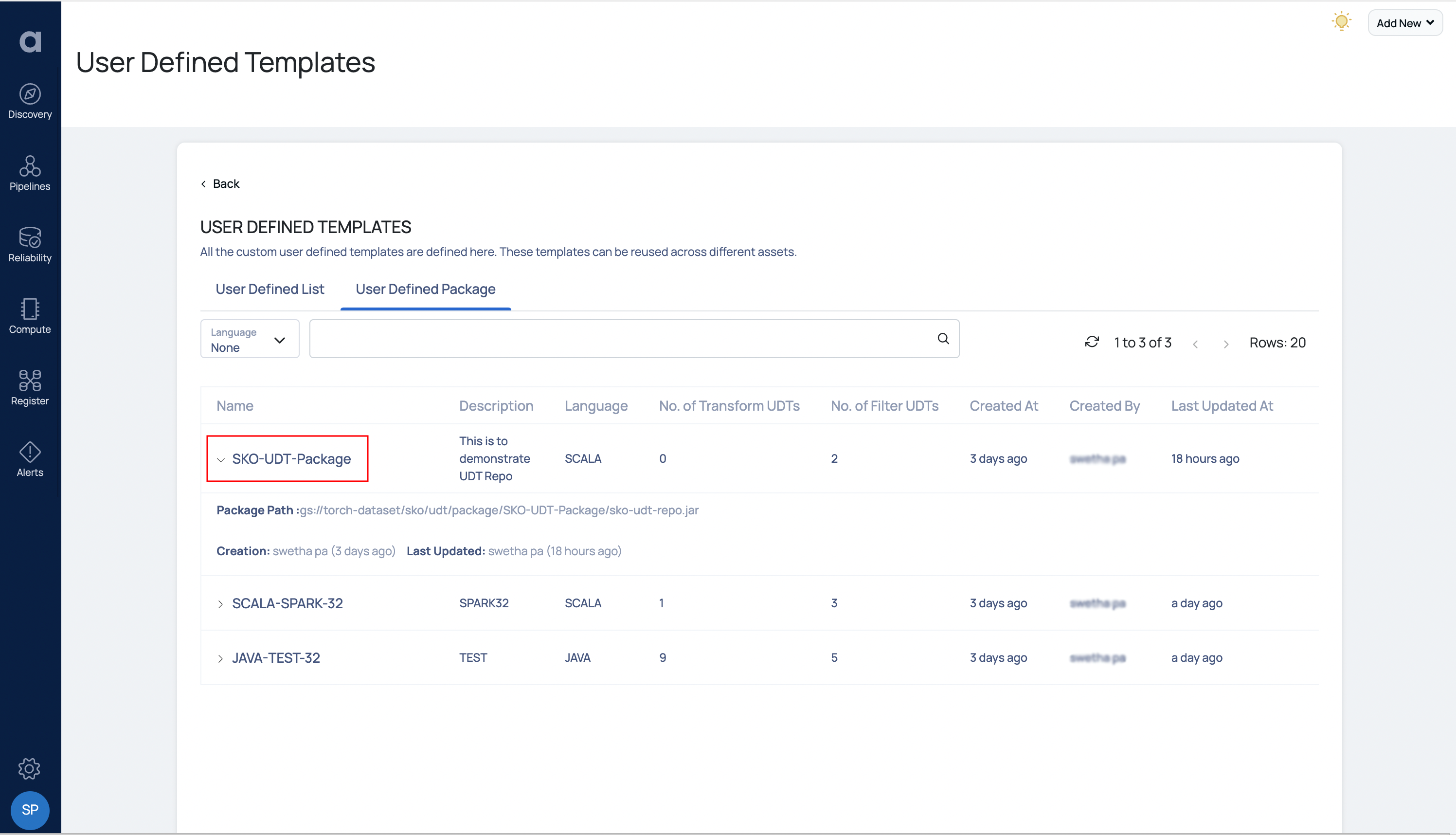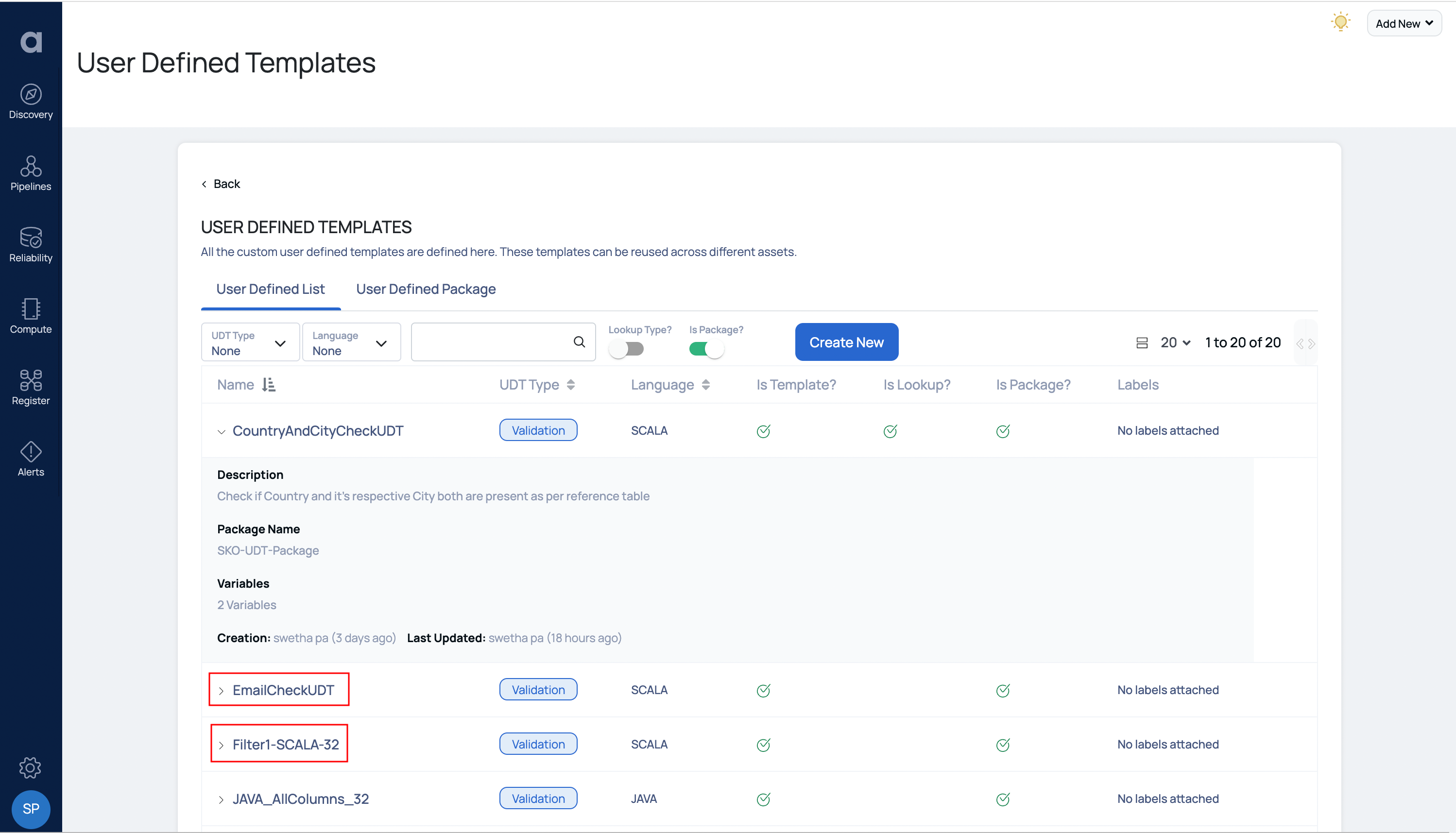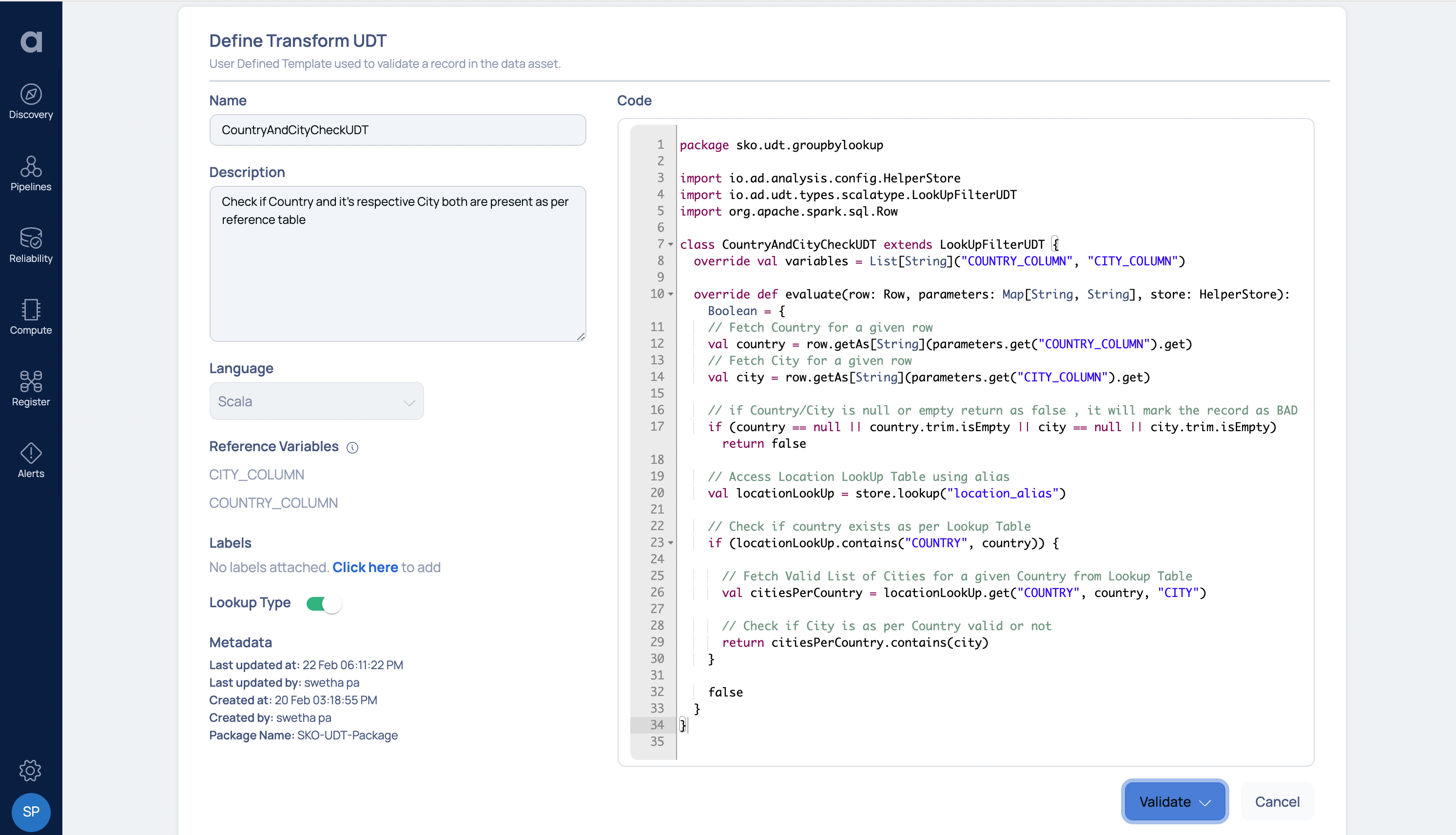Before You Begin
Make sure you contact an Acceldata Support Representative to download the ADOC CLI package. Additionally, you must meet all prerequisites#prerequisites for the usage of ADOC CLI.
Steps to Create UDT Project and Onboard to Torch Platform:
Step 1: Create a Project Using ADOC-CLI Interface
To create a project using ADOC-CLI interface, you first need to install it on your system. Once installed, open a command prompt or terminal and navigate to the directory where you want to create your project. Then, use the new command to create a new project.
Refer the new#new command.
Step 2: Create New UDT Definition
Please refer to the (Link Removed) for information on how to create new UDT definitions and their corresponding test cases.
Step 3: Commit Code Changes to Respective Git Repository
After creating the project, you can commit it to a Git repository to keep track of changes and collaborate with other developers. Create a new Git repository or use an existing one.
Step 4: Create a UDT Driven Manifest File
You must create a manifest file with the information below:
- Torch API and it's credentials
- Storage details: You must provide the storage type, the path where the binaries should be uploaded, and the credentials for the appropriate data storage.
- Package details: This information is regarding the necessary binaries that need to be uploaded and their corresponding meta data.
- UDT definitions: A list of all the UDT definitions and their associated meta data for the Torch platform.
Refer Manifest File Details.
Step 5: Create a CI/CD Pipeline
You must set up a CI/CD pipeline for projects that use UDT. The steps to publish must be configured by the user as a process, followed by:
- Run test cases: To determine whether the changes are stable, run JUnit test cases using the ADOC CLI test command. Refer the test command.
- Generate Binaries: To generate binaries, use the ADOC CLI package or build commands. We provide two methods for generating binaries:
- ADOC CLI package command: This command will generate skinny binaries. Refer the package command.
- ADOC CLI build command: This command will generate fat binaries with all the dependencies. Refer the build command.
- Upload Binaries in accordance with manifest: Using the input manifest file, the ADOC CLI push command will upload the binaries and create all UDT definitions in accordance with the manifest. Refer the push command.
UI Flow:
- Check UDT listing page for created or updated UDTs

- Check UDT package list for packages

- Validate created or updated UDT for a given package in UI

UDTs that were created using the UDT CLI Repo facility cannot be updated or edited on the UI; only validation is possible.
- Finally, by using the UDTs produced by the repo facility, a Data Quality policy can be created on any asset.
The flow for UDT-driven DQ cycle remains unchanged with regards to output and usage. For more information on how to create a Data Quality policy, see Data Quality Policy.